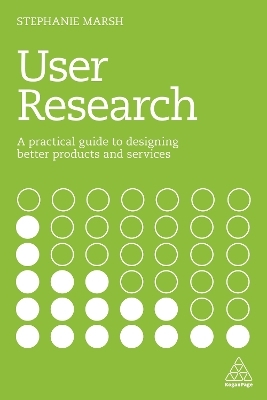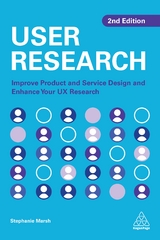
User Research
Kogan Page Ltd (Verlag)
978-0-7494-8104-9 (ISBN)
- Titel erscheint in neuer Auflage
- Artikel merken
Many businesses are based on creating desirable experiences, products and services for users. However in spite of this, companies often fail to consider the end user - the customer - in their planning and development processes. As a result, organizations find themselves spending huge sums of money creating products and services that, quite simply, don't work. User experience research, also known as UX research, focuses on understanding user behaviours, needs and motivations through a range of observational techniques, task analysis and other methodologies.
User Research is a practical guide that shows readers how to use the vast array of user research methods available. Covering all the key research methods including face-to-face user testing, card sorting, surveys, A/B testing and many more, the book gives expert insight into the nuances, advantages and disadvantages of each, while also providing guidance on how to interpret, analyze and share the data once it has been obtained.
Ultimately, User Research is about putting natural powers of observation and conversation to use in a specific way. The book isn't bogged down with small, specific, technical detail - rather, it explores the fundamentals of user research, which remain true regardless of the context in which they are applied. As such, the tools and frameworks given here can be used in any sector or industry, to improve any part of the customer journey and experience; whether that means improving software, websites, customer services, products, packaging or more.
Dr Stephanie Marsh is one of the UK's leading UX research professionals, and is currently Head of User Research and Analysis at UK Government Digital Service. She was previously the Head of Digital Strategy for the UK Ministry of Defence and a user research consultant for Bunnyfoot (one of the UK's foremost user research consultancy provider, with clients including BBC, Arsenal, easyJet, Boden and Oxfam).
Chapter - 01: Introduction: Why is user research so important?;
Section - ONE: The fundamentals: What good research looks like;
Chapter - 02: Planning, objectives and legalities in user research;
Chapter - 03: Best practice in user research: Who, what, why and how;
Chapter - 04: Managing user research logistics: Agencies, facilities and contracts;
Section - TWO: Selecting and using user research methods;
Chapter - 05: Usability testing: Observing people doing things;
Chapter - 06: Content testing: What do people think your content means?;
Chapter - 07: Card sorting: Understanding how people group and relate things;
Chapter - 08: Surveys: How to gauge a widespread user response;
Chapter - 09: User interviews: Understanding people's experience through talking to them;
Chapter - 10: Diary studies: How to capture user research data over time;
Chapter - 11: Information architecture validation: Does the structure of your information work for your users?;
Chapter - 12: Ethnography: Observing how people behave in the real world;
Chapter - 13: Contextual inquiry: Interviewing people in their own environment;
Chapter - 14: A/B Testing: A technique to compare different options;
Chapter - 15: Getting the best out of stakeholder workshops;
Chapter - 16: Guerrilla research: Running fast-paced research in the real world;
Chapter - 17: How to combine user research methodologies;
Section - THREE: Analyzing and presenting your data;
Chapter - 18: Content analysis: A method of coding and making sense of your qualitative data;
Chapter - 19: Affinity diagramming: Understand your data through identifying its themes;
Chapter - 20: Prioritizing issues and user needs: What’s important and what to work on next;
Chapter - 21: Making recommendations: How to make your research findings actionable;
Chapter - 22: Creating executive summaries and detailed reports to present results;
Chapter - 23: Using video playback to present your research results;
Chapter - 24: Using personas to communicate user characteristics and behaviours;
Chapter - 25: Using mental models to visualize how users think and identify opportunities;
Chapter - 26: Using journey and experience maps to visualize user research data;
Chapter - 27: Using scenarios and storyboards to represent the user journey;
Chapter - 28: Using infographics to translate numerical and statistical data;
Chapter - 29: How to recommend changes to visual, interaction and information design;
Chapter - 30: Conclusion;
| Erscheinungsdatum | 09.03.2018 |
|---|---|
| Verlagsort | London |
| Sprache | englisch |
| Maße | 157 x 234 mm |
| Gewicht | 445 g |
| Themenwelt | Informatik ► Datenbanken ► Data Warehouse / Data Mining |
| Wirtschaft ► Betriebswirtschaft / Management ► Marketing / Vertrieb | |
| Wirtschaft ► Betriebswirtschaft / Management ► Unternehmensführung / Management | |
| ISBN-10 | 0-7494-8104-8 / 0749481048 |
| ISBN-13 | 978-0-7494-8104-9 / 9780749481049 |
| Zustand | Neuware |
| Informationen gemäß Produktsicherheitsverordnung (GPSR) | |
| Haben Sie eine Frage zum Produkt? |
aus dem Bereich



